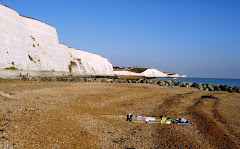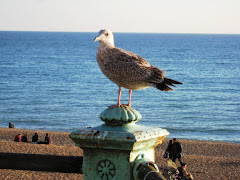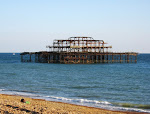The archaeological site at Olèrdola, despite the unpromising official name, is one of the most extensive in Catalonia.
Oddly overlooked by many guide-books, this imposing and strategic mountain-top site, with its stunning views over the Penedès plain, has been occupied for over 4,000 years in various guises, and was only completely abandoned in the late 19th century. The site has remains from the Bronze Age through to the 13th century, as well as a museum and interpretation centre.
Admittedly, it’s no Pompeii, as apart from the walls and a church, most of what’s here is restricted to low walls and foundations, and features cut into the limestone rock, such as hearths, silos and tombs. But it’s a fascinating amalgam of features for anyone with an interest in history and archaeology.
History
Its history is complex, but essentially it was first occupied in the Bronze Age, around 2,000 BC. From this period, a few hut walls survive, along with some pottery and tools (now in the museum). Around the 8th and 7th centuries BC, at the start of the Iron Age, the first part of the wall was built.
Between the 5th and 1st centuries BC, it was occupied by the Cessetans, one of the Iberian peoples who are regarded as Spain’s first historical culture (and who have given the peninsular its name). Their town or oppidum was extensive, and the foundations of many of their buildings, including a large leather tannery, survive.
The Romans chose the site around the 1st Century BC as a regional capital to control the Penedès plain. Of their works, 1km-long circumference wall, a huge water cistern, a quarry area, street drains and remains of a watchtower survive. The site declined once Iberia was fully conquered, and for a thousand years the site was only occupied sporadically.
Then, in the 10th Century, it once again became a strategic location as a frontier town of the County of Barcelona. Formally refounded in 929AD, it played a key role in the Christian reconquest of Catalonia from the Moors, and grew beyond the walls across the whole of the summit plateau, to encompass an area of 25 hectares. The remains of a castle, two churches, two necropolises, streets, houses and yet more walls testify to its importance. The town declined again from the 12th century and was largely abandoned by the 14th, as the frontier of Christian Spain shifted south and the inhabitants moved to the more fertile and well-watered plain below. However, the site continued to be used in times of conflict, right up until the Napoleonic Wars, and the church of St Michael – the best preserved building on the site – was in regular use until 1885.
Site tour
This takes about an hour, and involves some scrambling over rocky and uneven surfaces. Many of the buildings are identifiable only from the foundations and other features cut into the limestone rock, but these are very extensive, a testament to the thin topsoil.
Starting from the south are the remains of the Roman Watchtower and Mediaeval castle, and sections of perimeter wall, mostly from the 10th Century. In the central section is the well-preserved church of St Michael. Consecrated in 935AD and built with unusual Moorish style aches, it was rebuilt in 992 in the present Romanesque style, but destroyed by the Moors in 1108. The present church was rebuilt from the ruins and dates from this time, and has simple Romanesque features, a rare window pane made from a thin sheet of quartz, and blocked-up doorways and other elements from the earlier churches.
Around the church is the first necropolis. The graves (all now empty) are cut into the rock (due to the thin soil) and are anthropomorphic – ie shaped to fit a human body. The large number of small baby- and child-sized graves testifies to the high infant mortality rates of the period. To the east is a well preserved section of wall, and to the west is the Roman Quarry, where unfinished stone blocks are still visible.
Adjacent to this is a large bare area, the site of part of the mediaeval town, where the plans of houses can be made out from the foundation cut into the rock (and yet more silos and hearths). A long rock-cut drain leads from here, via a filter pond to the impressive swimming pool-sized Roman cistern, used to collect and store rainwater. Still functional, it has a capacity of 350,000 litres and a set of steps carved along one side, used to clean the tank as well as to collect water. Further on are the remains of a mediaeval wine press and cellar area.
Moving north-east, you come to another section of mediaeval wall and a ‘street’ with a central water-channel and steps, and the foundations of more houses all date from the 10th-12th centuries. To the north west, just before the visitor centre, is the main and most impressive section of wall, with the pre-Iberian, Roman and mediaeval levels clearly visible. Here are also the remains of the Bronze Age and Iberian settlement, including a tannery and floors in which infants were buried – their skeletons are eerily re-created in the hols in which they were found.
Beyond the visitor centre, a series of mediaeval rock-cut steps leads to a spring and a platform on which were more houses (and more cisterns). To the north, a five minute walk takes you to the extensive mediaeval settlement outside the walls, which grew up between the walls and the 10th-Century chapel of Santa Maria (now in ruins). Few remains of buildings survive, but around the chapel are about a hundred anthropomorphic tombs, many clearly of newborn babies and infants. The name of the area, the Pla de Albats, comes from the Catalan word for ‘new-born’. It's an eerie reminder of what life was really like in those times.
Practicalities
The site is accessed from the C-15 road from Vilafranca del Penedès to Vilanova i la Geltrú, just north of the town of Canyelles. The site is 2km up a steep but good road, and there is a large car-park by the Visitor centre, in front of the main wall.
The Visitor Centre houses a small museum and interpretation centre, water fountains and toilets (including accessible toilets - although much of the site is not suitable for wheelchair users). There is also a picnic area. Allow about 20 minutes for the museum and at least an hour to walk around the site.
Good footwear is advisable to clamber over the uneven surfaces and steep paths, as well as a sun hat in summer – much of the site has little shade and I can testify that you need it in 30C heat!
If you don’t have a car, there is a foot-path from St Miquel d'Olèrdola, which is a fairly strenuous 4km, 600ft climb via a footpath (one hour) or slightly less on the road (although this is unpleasantly busy for the few hundred metres on the C-15 until you turn off for the site). St Miquel d'Olèrdola is served by the roughly two-hourly bus service from Vilafranca to Vilanova, and there is a restaurant / bar there.
Oddly overlooked by many guide-books, this imposing and strategic mountain-top site, with its stunning views over the Penedès plain, has been occupied for over 4,000 years in various guises, and was only completely abandoned in the late 19th century. The site has remains from the Bronze Age through to the 13th century, as well as a museum and interpretation centre.
Admittedly, it’s no Pompeii, as apart from the walls and a church, most of what’s here is restricted to low walls and foundations, and features cut into the limestone rock, such as hearths, silos and tombs. But it’s a fascinating amalgam of features for anyone with an interest in history and archaeology.
History
Its history is complex, but essentially it was first occupied in the Bronze Age, around 2,000 BC. From this period, a few hut walls survive, along with some pottery and tools (now in the museum). Around the 8th and 7th centuries BC, at the start of the Iron Age, the first part of the wall was built.
Between the 5th and 1st centuries BC, it was occupied by the Cessetans, one of the Iberian peoples who are regarded as Spain’s first historical culture (and who have given the peninsular its name). Their town or oppidum was extensive, and the foundations of many of their buildings, including a large leather tannery, survive.
The Romans chose the site around the 1st Century BC as a regional capital to control the Penedès plain. Of their works, 1km-long circumference wall, a huge water cistern, a quarry area, street drains and remains of a watchtower survive. The site declined once Iberia was fully conquered, and for a thousand years the site was only occupied sporadically.
Then, in the 10th Century, it once again became a strategic location as a frontier town of the County of Barcelona. Formally refounded in 929AD, it played a key role in the Christian reconquest of Catalonia from the Moors, and grew beyond the walls across the whole of the summit plateau, to encompass an area of 25 hectares. The remains of a castle, two churches, two necropolises, streets, houses and yet more walls testify to its importance. The town declined again from the 12th century and was largely abandoned by the 14th, as the frontier of Christian Spain shifted south and the inhabitants moved to the more fertile and well-watered plain below. However, the site continued to be used in times of conflict, right up until the Napoleonic Wars, and the church of St Michael – the best preserved building on the site – was in regular use until 1885.
Site tour
This takes about an hour, and involves some scrambling over rocky and uneven surfaces. Many of the buildings are identifiable only from the foundations and other features cut into the limestone rock, but these are very extensive, a testament to the thin topsoil.
Starting from the south are the remains of the Roman Watchtower and Mediaeval castle, and sections of perimeter wall, mostly from the 10th Century. In the central section is the well-preserved church of St Michael. Consecrated in 935AD and built with unusual Moorish style aches, it was rebuilt in 992 in the present Romanesque style, but destroyed by the Moors in 1108. The present church was rebuilt from the ruins and dates from this time, and has simple Romanesque features, a rare window pane made from a thin sheet of quartz, and blocked-up doorways and other elements from the earlier churches.
Around the church is the first necropolis. The graves (all now empty) are cut into the rock (due to the thin soil) and are anthropomorphic – ie shaped to fit a human body. The large number of small baby- and child-sized graves testifies to the high infant mortality rates of the period. To the east is a well preserved section of wall, and to the west is the Roman Quarry, where unfinished stone blocks are still visible.
Adjacent to this is a large bare area, the site of part of the mediaeval town, where the plans of houses can be made out from the foundation cut into the rock (and yet more silos and hearths). A long rock-cut drain leads from here, via a filter pond to the impressive swimming pool-sized Roman cistern, used to collect and store rainwater. Still functional, it has a capacity of 350,000 litres and a set of steps carved along one side, used to clean the tank as well as to collect water. Further on are the remains of a mediaeval wine press and cellar area.
Moving north-east, you come to another section of mediaeval wall and a ‘street’ with a central water-channel and steps, and the foundations of more houses all date from the 10th-12th centuries. To the north west, just before the visitor centre, is the main and most impressive section of wall, with the pre-Iberian, Roman and mediaeval levels clearly visible. Here are also the remains of the Bronze Age and Iberian settlement, including a tannery and floors in which infants were buried – their skeletons are eerily re-created in the hols in which they were found.
Beyond the visitor centre, a series of mediaeval rock-cut steps leads to a spring and a platform on which were more houses (and more cisterns). To the north, a five minute walk takes you to the extensive mediaeval settlement outside the walls, which grew up between the walls and the 10th-Century chapel of Santa Maria (now in ruins). Few remains of buildings survive, but around the chapel are about a hundred anthropomorphic tombs, many clearly of newborn babies and infants. The name of the area, the Pla de Albats, comes from the Catalan word for ‘new-born’. It's an eerie reminder of what life was really like in those times.
Practicalities
The site is accessed from the C-15 road from Vilafranca del Penedès to Vilanova i la Geltrú, just north of the town of Canyelles. The site is 2km up a steep but good road, and there is a large car-park by the Visitor centre, in front of the main wall.
The Visitor Centre houses a small museum and interpretation centre, water fountains and toilets (including accessible toilets - although much of the site is not suitable for wheelchair users). There is also a picnic area. Allow about 20 minutes for the museum and at least an hour to walk around the site.
Good footwear is advisable to clamber over the uneven surfaces and steep paths, as well as a sun hat in summer – much of the site has little shade and I can testify that you need it in 30C heat!
If you don’t have a car, there is a foot-path from St Miquel d'Olèrdola, which is a fairly strenuous 4km, 600ft climb via a footpath (one hour) or slightly less on the road (although this is unpleasantly busy for the few hundred metres on the C-15 until you turn off for the site). St Miquel d'Olèrdola is served by the roughly two-hourly bus service from Vilafranca to Vilanova, and there is a restaurant / bar there.



No comments:
Post a Comment